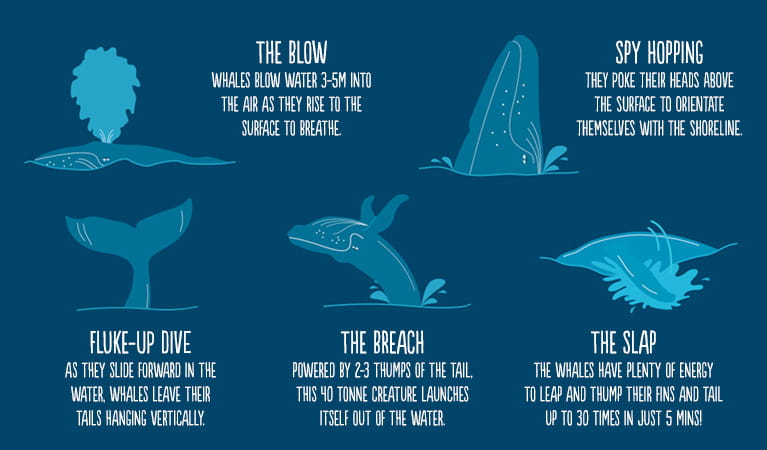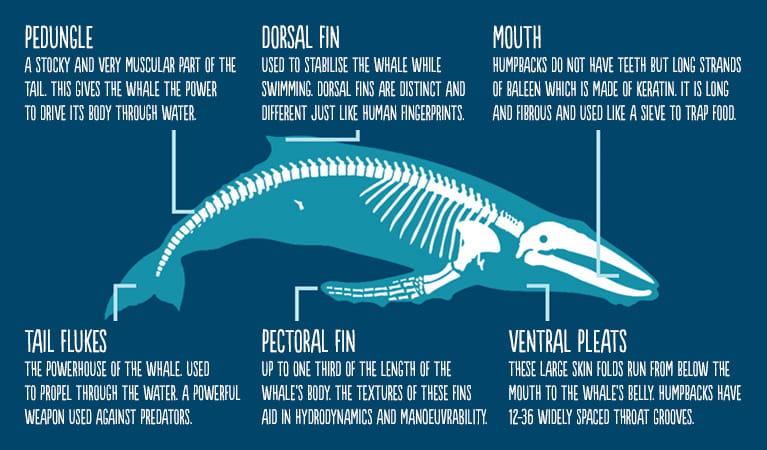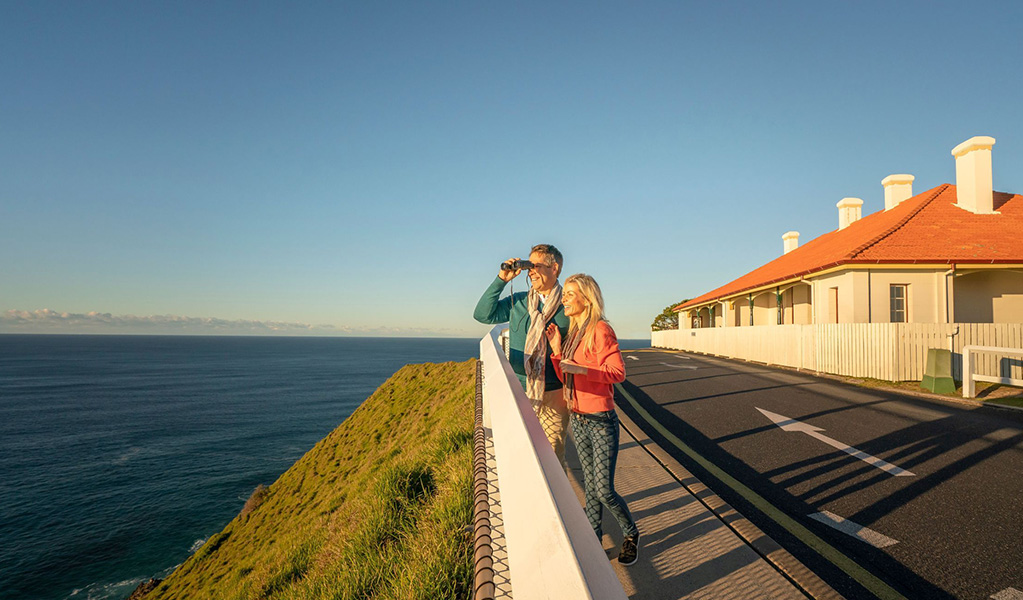Whale watching tips and guidelines
Read our tips and guidelines to get the best out of your whale watching experience in coastal national parks around NSW.
Read more about Whale watching tips and guidelines
Whales migrate along the NSW coastline every year from about May to November. They head north from May to July to warm, shallower waters for calving and mating. From July to November they head south cold water for feeding.
Each year, around 2000 whales make this journey within sight of spectacular vantage points along the coast. Enrich your whale watching experience with our top tips and by learning what to look for, which species you might see and how to identify them.
Planning tips
Where to go
There are lots of great places along the NSW coastline to spot whales. The national parks stretching from the NSW South Coast to Far North NSW are a great place to start planning your next coastal adventure.
Check out some of our top whale watching spots.
What to take with you
- Warm clothes and a blanket
- Chairs to sit on
- Hat and sunscreen
- Thermos with a hot drink or soup
- Drinking water and food
- Binoculars and sunglasses
- Camera, with a telephoto lens if you have one
- Patience
Whale watching tips
Whales are quite active in the water and display a range of spectacular surfacing behaviours that are amazing to witness.
Experts believe that some of these behaviours help them to work out their position in relation to land, or allow them to communicate with other whales. Fin slapping may also be a warning of danger nearby.
Another theory is that whales launch themselves out of the water and fall back with a splash to rid themselves of skin parasites. Of course, they may just be having fun!
What to look for

Identifying whale species
Whale species are identified using some of the physical aspects below.
- Body length
- Presence of a dorsal fin
- Size and position of the dorsal fin
- Shape and size of flippers
- Shape of the head and general body shape
- Presence of a beak
- Shape of the blow
- Body colour and patterns
- Swimming characteristics
- Presence of teeth or baleen and number of teeth.

Whale watching safety and guidelines
Remember to always be aware of your surroundings as many coastal walks and vantage points have exposed cliff edges. Keep a safe distance - at least 5m - from edges and rock platforms.
For your safety, please pay attention to signage and take advice from NSW National Parks staff for your safety.
If you’re on the water learn what you need to know to stay safe and comply with current regulations.

